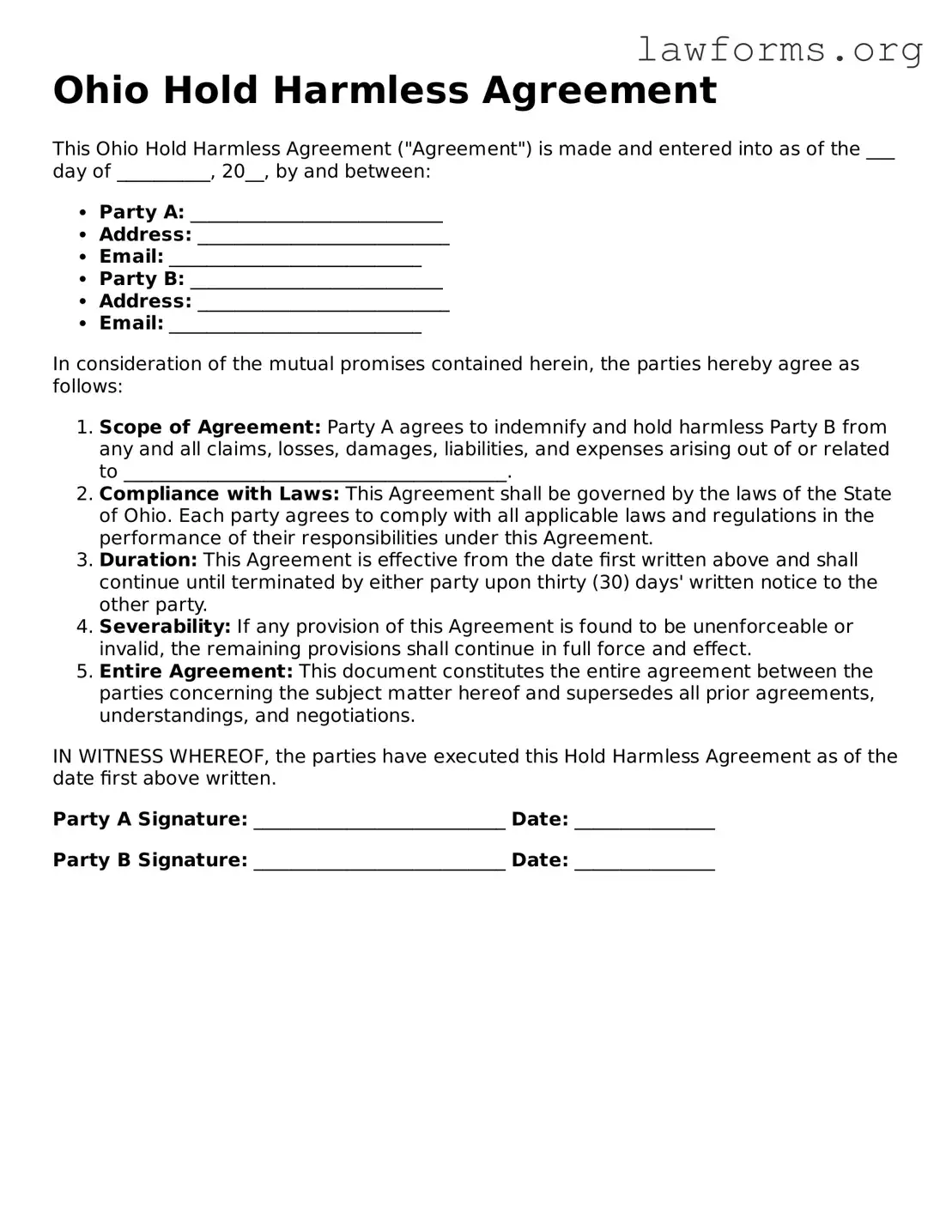Ohio Hold Harmless Agreement
This Ohio Hold Harmless Agreement ("Agreement") is made and entered into as of the ___ day of __________, 20__, by and between:
- Party A: ___________________________
- Address: ___________________________
- Email: ___________________________
- Party B: ___________________________
- Address: ___________________________
- Email: ___________________________
In consideration of the mutual promises contained herein, the parties hereby agree as follows:
- Scope of Agreement: Party A agrees to indemnify and hold harmless Party B from any and all claims, losses, damages, liabilities, and expenses arising out of or related to _________________________________________.
- Compliance with Laws: This Agreement shall be governed by the laws of the State of Ohio. Each party agrees to comply with all applicable laws and regulations in the performance of their responsibilities under this Agreement.
- Duration: This Agreement is effective from the date first written above and shall continue until terminated by either party upon thirty (30) days' written notice to the other party.
- Severability: If any provision of this Agreement is found to be unenforceable or invalid, the remaining provisions shall continue in full force and effect.
- Entire Agreement: This document constitutes the entire agreement between the parties concerning the subject matter hereof and supersedes all prior agreements, understandings, and negotiations.
IN WITNESS WHEREOF, the parties have executed this Hold Harmless Agreement as of the date first above written.
Party A Signature: ___________________________ Date: _______________
Party B Signature: ___________________________ Date: _______________
